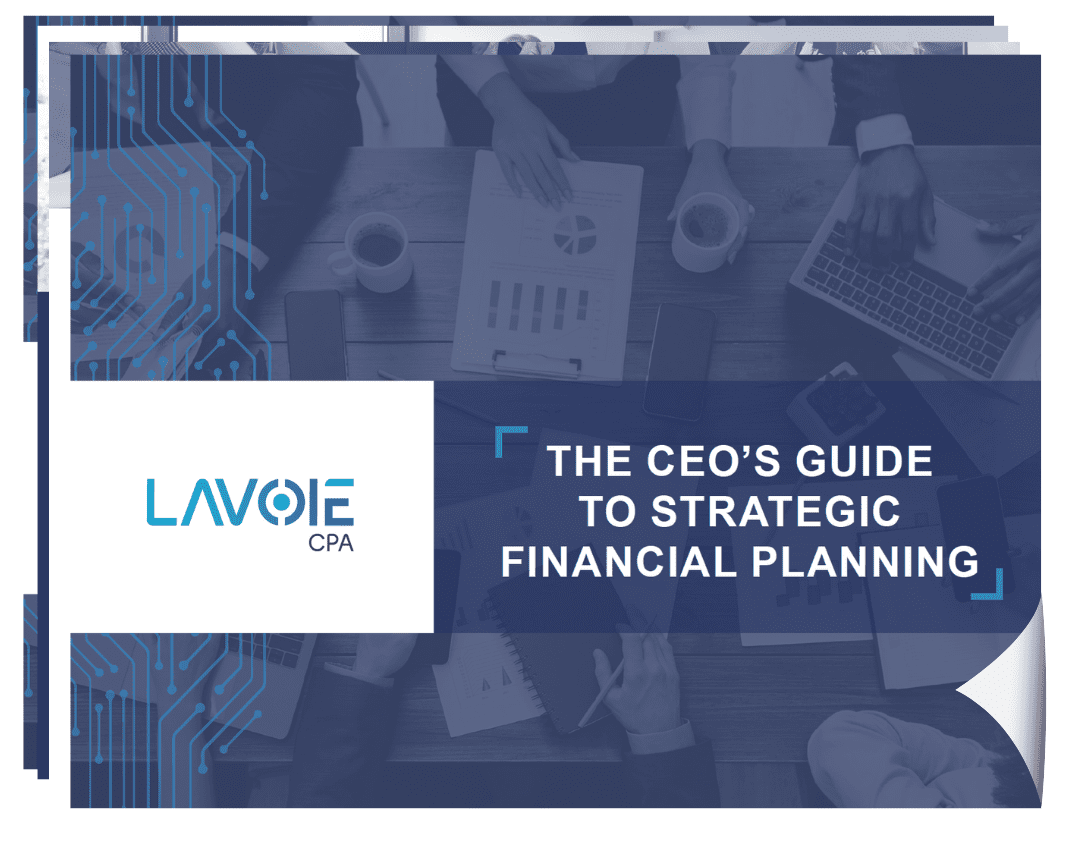
by Sharai Lavoie | Jul 29, 2025 | Financial Services, Growth
Private equity firms are growth architects. They spot hidden potential, unlock value, and drive transformation across their portfolio. But to turn bold visions into sustainable results, there’s a critical foundation every growth journey needs: robust financial infrastructure.
Investing in the right financial systems isn’t just about efficiency; it’s about setting the stage for every success story a PE firm will create. Here’s why building modern financial infrastructure is one of the most strategic moves private equity leaders can make.
Turning Vision Into Reality: Financial Infrastructure as a Growth Engine
Every deal marks the start of a new chapter. The right financial infrastructure turns integration challenges into opportunities, empowering teams to collaborate, scale, and innovate faster than ever before. Rather than wrestling with outdated systems, private equity teams are free to focus on what really matters: accelerating growth, seizing opportunities, and delivering strong returns.
A modern financial foundation enables:
- Faster onboarding of acquisitions: Integrate new companies smoothly and confidently, supporting a “buy and build” strategies.
- Real-time insights: Give leaders the data they need to make agile, informed decisions and stay ahead of the competition.
- Scalable growth: Expand into new markets or business lines with confidence, knowing that the systems can support the journey.
Overcoming Barriers, Unlocking Potential
Legacy systems and manual processes might have served companies well in their early stages, but they can quickly become growth bottlenecks. By proactively upgrading a portfolio company’s financial infrastructure, PEs can unlock a host of strategic advantages:
- Accelerated Integrations: Standardized systems enable seamless onboarding of acquisitions, keeping teams focused on growth, not on fixing broken processes.
- Streamlined Reporting: Automation eliminates manual work and error-prone spreadsheets, delivering accurate, timely data that inspires confidence in both leadership and investors.
- Stronger Controls: Built-in compliance and risk management features protect investments and simplify audits or due diligence.
- Engaged Teams: User-friendly systems mean finance teams can focus on analysis and strategy, not endless spreadsheets.
Building for the Future: What Best-in-Class Infrastructure Looks Like
Forward-thinking private equity firms are already embracing modern finance technology to future-proof their portfolios. Here’s what that looks like in practice:
- Cloud-Based ERPs: Platforms like Sage Intacct bring together multi-entity management, real-time consolidation, and advanced analytics, all accessible anytime, anywhere.
- Automated Workflows: Tools for accounts payable, accounts receivable, and expense management free up time and reduce human error.
- Unified Data: Centralized platforms create a single source of truth, enabling collaboration and transparency across a portfolio of companies.
- Custom Dashboards: Tailored reporting keeps everyone aligned on key performance metrics, turning information into action.
The result? Portfolio companies that are better equipped to grow, adapt, and succeed.
How to Make the Shift: A Roadmap for PE Firms
Making the leap to a modern financial infrastructure is a strategic investment in the PE firm’s and their portfolio companies’ long-term success. Here’s how leading PE firms get started:
- Assess and Dream Big: Evaluate current systems and imagine what the ideal future state looks like. Where can technology empower the finance and accounting teams and unlock value?
- Prioritize for Impact: Focus on solutions that drive the biggest wins, like real-time consolidation, automation, and easy integration.
- Choose Partners Wisely: Work with advisors who understand both finance and technology. The right guidance can turn change management into a smooth, positive experience.
- Standardize for Scalability: Where possible, align portfolio companies on common platforms and processes. This streamlines integration and unlocks portfolio-wide insights.
- Celebrate Early Wins: Roll out improvements in stages, highlighting quick successes to build momentum and inspire teams across your organization.
The Upside: More Growth, More Value, More Confidence
Strong financial infrastructure isn’t just a box to check. It’s a launchpad for everything that PE firms, portfolio companies, and management teams want to achieve, making growth more predictable, integrations smoother, and the portfolio more attractive at exit. The message is clear: investing in a financial foundation is investing in the long-term success of every deal.
Ready to give your portfolio the tools to grow with confidence? Start the conversation with Lavoie CPA to discover how the right financial infrastructure can help unlock new value and position your investments for a thriving future.

by Sharai Lavoie | Jul 15, 2025 | Financial Services
You’ve been working on your pitch deck for weeks, refining your story and perfecting your slides. But there’s one piece that keeps giving you anxiety: your financial model. When investors ask to see your projections, do you feel confident in what you’re showing them? Or do you worry that your forecast model might actually hurt your chances of getting funded?
If you’re in the latter camp, you’re not alone. Most founders struggle with building financial models that actually support their fundraising efforts instead of undermining them.
That’s exactly why our VP and Partner, Matt DeWald, recently teamed up with Charlotte Ketelaar from Capwave for an in-depth webinar on “The Financial Model That Gets You Funded.” If you missed the live session, we’ve embedded the full recording below—plus we’re sharing the key insights that can transform how you approach financial modeling for your company.
Why Your Financial Model Can Make or Break Your Fundraising
Here’s what Matt emphasized during the webinar: “Your financial model usually comes in after your pitch deck, but you really need to know your numbers at the time that you’re pitching.”
The problem most founders face isn’t that they don’t have a financial model—it’s that their model doesn’t align with their pitch deck story. When there’s a disconnect between what you’re promising and what your numbers show, investors notice immediately.
As Matt explained, “As soon as an investor sees your financial model and it all makes sense and everything falls into place, that’s when they’re like, ‘Oh yeah, this founder knows exactly what they’re talking about.'”
The reality is simple: Many investors are finance people. They’ve seen hundreds of pitch decks and thousands of financial models. They know what realistic growth looks like, and they can spot unrealistic projections from a mile away.
The Framework That Actually Works: Matt’s Live Demo
During the webinar, Matt didn’t just talk theory—he showed exactly how to build a defensible financial model using a real pre-seed company example. Here’s what made that model work:
Show Your Work
“I think some of the worst case scenarios that I’ve seen are people who just put in revenue numbers without really understanding the drivers of that revenue,” Matt explained during the demo.
The solution? Make your assumptions visible and easily calculable.
In the live example:
- $25 per user subscription fee (clearly visible input)
- Specific trigger dates for when new features would launch
- Growth rates that decreased over time as market penetration increased
- All inputs color-coded so investors could easily identify and modify assumptions
When an investor wants to test what happens if your customer acquisition cost changes from $25 to $35, they should be able to make that change in one cell and see the impact throughout your entire model.
Focus on Real Business Drivers
The demo company built their model around specific, measurable drivers:
- Number of advisors using their platform
- Average transaction volume per advisor ($3,000 monthly)
- Commission rates tied to specific revenue streams
- Technology development milestones that unlocked new revenue
This wasn’t guesswork—each assumption had a logical basis that the founding team could defend to investors.
Plan Your Team Like You Mean It
One of the most valuable parts of Matt’s presentation focused on hiring plans. As he noted, “I’ve seen VCs really hone in on and really drill in on management and ask the question, who’s going to be your first 10 hires?”
The demo model included:
- Specific roles and start dates for each hire
- Salary levels and department allocations
- Payroll-related costs (that 15% for benefits and taxes most people forget)
- Commission structures for sales team members
The model even projected headcount by department and month—exactly what investors want to see when evaluating your use of funds.
Don’t Forget About Cash Flow
Here’s where many founders stumble. They build beautiful income statements but forget that cash flow is what actually matters for survival.
Matt’s model showed monthly cash flow projections, clearly identifying when the company would hit low cash points and need additional funding. “You want to make sure that you’re reconciling your forecast model into cash,” he emphasized.
The Technology Foundation: Start the Way You Want to Finish
One of the most practical insights from the webinar wasn’t about modeling—it was about the systems that support your model. Matt shared Lavoie’s philosophy: “Start the way you want to finish.”
The Problem with Basic Systems: Most startups begin with QuickBooks because it’s familiar and inexpensive. But as Matt revealed, “9 out of 10, maybe even 19 out of 20” of Lavoie’s new clients need immediate migration to more sophisticated systems.
The Better Approach: “Don’t wait for the wheels to fall off your accounting systems before you turn around and say, ‘Oh, I should have done this a while ago,'” Matt warned.
Almost all seed and pre-seed companies that work with Lavoie get migrated to Sage Intacct because it:
- Handles the volume and complexity of scaling companies
- Integrates KPIs directly into the accounting system
- Provides real-time dashboards for investor reporting
- Aligns with the detailed forecasting models that actually work
Real-World Application: What the Demo Revealed
During the live demonstration, Matt showed a complete financial model for a pre-seed software company. What made this model compelling wasn’t complexity—it was clarity and logic.
Revenue Model Highlights:
- Three distinct revenue streams launching at different times
- Clear trigger dates tied to technology development milestones
- Simple calculations that investors could easily understand and modify
Expense Planning That Makes Sense:
- Detailed hiring plan broken down by department (General & Administrative, Technology, Sales & Marketing)
- Specific start dates and salary levels for each role
- Automated commission calculations tied to revenue performance
Cash Flow Reality:
- Monthly projections showing exactly when funding would be needed
- Working capital considerations for accounts receivable timing
- Clear runway calculations based on actual burn rates
As Matt noted, “You want to keep this maintained as time goes on,” which is why the model was built to easily incorporate actual results alongside forecasts.
The Trust Factor: What We’re Really Selling
One of the most honest moments in the webinar came when Matt talked about Lavoie’s approach: “What we are selling at the end of the day is trust.”
That trust comes from understanding both the startup journey and investor expectations. Lavoie regularly helps companies scale from pre-revenue to over $3,000,000 in monthly revenue while maintaining streamlined financial processes.
Lavoie’s Partnership Approach:
- Lavoie becomes part of the team, not just a service provider
- Focus on building financial infrastructure that scales with growth
- Support throughout the entire fundraising and scaling journey
Key Takeaways for Building Your Financial Model
Whether you’re preparing for pre-seed or Series B, here are the critical principles Matt shared:
- Make assumptions visible and testable – Color-code inputs so investors can easily modify and understand them
- Link drivers to financial outcomes – Show exactly how your key metrics (conversion rates, CAC, churn) impact revenue and costs
- Plan expenses strategically – Your hiring plan should be more than “we’ll hire 10 people next year”
- Reconcile everything to cash – Income statements don’t keep you alive; cash flow does
- Keep it simple and defendable – Complexity doesn’t impress investors; clarity does
What Happens Next
The webinar made one thing clear: the founders who get funded are the ones who can clearly articulate how their ideas translate into sustainable, profitable businesses.
If you watched the webinar and realized your financial model needs work:
Start with an honest assessment – Can an investor easily understand your key assumptions and test different scenarios?
Focus on your real drivers – What specific metrics actually drive your revenue and costs?
Plan your systems – Are you building financial infrastructure that can scale with your ambitions?
Ready to build a financial model that actually gets you funded?
Matt emphasized during the webinar that building an effective model starts with understanding your business deeply. As he noted, “I probably spend two hours understanding the business, talking to them, understanding how it works, to one hour building the actual model.”
Start the Conversation to discuss your financial modeling needs and learn how Lavoie can support your fundraising journey. Whether you’re building your first model or preparing for Series B, we’ll help you create financial projections that tell your story convincingly.
Connect with Matt DeWald on LinkedIn for ongoing insights about financial management and fundraising best practices.
The right financial model doesn’t just help you raise money—it helps you build a business that’s actually worth investing in.

by Sharai Lavoie | Feb 16, 2021 | Accounting, Blog, Budgeting, Business Intelligence, CFO, Community, Competitive Advantage, CPA, Entrepreneurs, Finance, Financial Services, Growth, Lavoie, Planning, Services, Small Business
Developing a strategic financial plan can seem daunting; however, it can be boiled down into two questions: what are you doing now and where do you want to be? This article walks you through the process of answering these two questions, providing a foundation for developing a financial strategy for your organization.
Question 1: What Are You Doing Now?
Every journey has a starting point and an ending point. Before you can implement a plan to achieve your financial goals, it is important to consider where you are now.
Current State of the Numbers
The current state of your organization’s numbers are a good starting point when determining your organization’s capability to meet its financial goals. Some important questions to ask include:
- Are you in a position of stability? Financial stability is vital to reaching “stretch” goals. If the organization is not currently financially stable, it is important to identify this fact and develop a strategy for achieving stability as a first step in the planning process.
- What is actually coming in/out the door? Knowing the size of the company’s cash reserves is not enough for financial planning. How much revenue is coming into the organization and how much is going out again as expenses?
- What is fueling the majority of your expenses? While increasing sales is one way of improving the organization’s financial footing, the ability to do so depends on the market and potential customers. Identifying and minimizing expenses increases profits as well but is less impacted by external factors.
Culture
Achieving financial goals requires the support of the entire organization. Take a moment to consider your organization’s culture and if the company has the maturity and ability to meet its goals.
- Do your decisions match your vision and mission? An organization’s goals and procedures are important, but actions are even more so. Are your decisions, both recent and historical, helping to move the organization towards its goals?
- Would your employees agree? Employees throughout the organization can have different perspectives, insights, and recommendations. Ask those “down in the weeds” how well the company is following its vision and mission and how they believe things could do better.
Question 2: Where Do You Want To Be?
The effectiveness of a strategic plan can only be effectively measured if there are usable metrics. Before starting to build a plan to improve the organization’s financial position, it is necessary to define success and failure.
Targets
The first step in defining “success” for a financial strategy is defining concrete targets. From there, the next question to ask is what do you need to achieve your targets?
- Human Capital. Does your organization have the human capital necessary to achieve its goals? This not only includes headcount but access to the specific skill sets required now and in the future.
- Acquisitions. Does your organization have the capabilities that it requires? Are there areas of your business where things could be done more effectively or efficiently?
- IT Investments. The IT landscape is evolving rapidly, and new solutions have the potential to dramatically improve operational efficiency and effectiveness. Are there any IT investments that the organization should make that would help in reaching its targets?
Expenses
A failure to properly monitor and manage expenses is one of the most common ways that businesses fail to achieve their financial goals. Gaining visibility into past, present, and future expenditures is an essential part of financial planning.
- How can you gain more visibility into your expenditures? Visibility into expenditures is essential to identifying opportunities for optimizations and cost cutting. How can you achieve a higher level of visibility into business operations?
- Do you have an idea of your cash flow on a daily, weekly, and monthly basis? What level of visibility do you currently have into your organization’s cash flows? Examining cash flows at the daily, weekly, and monthly level can help to identify potential inefficiencies and opportunities.
Beginning Your Strategic Financial Plan
Answering the questions that were asked in this article enables you to lay the groundwork for developing your organization’s financial strategy. To learn about the next steps in your financial planning process, download the CEO’s Guide to Strategic Financial Planning.








